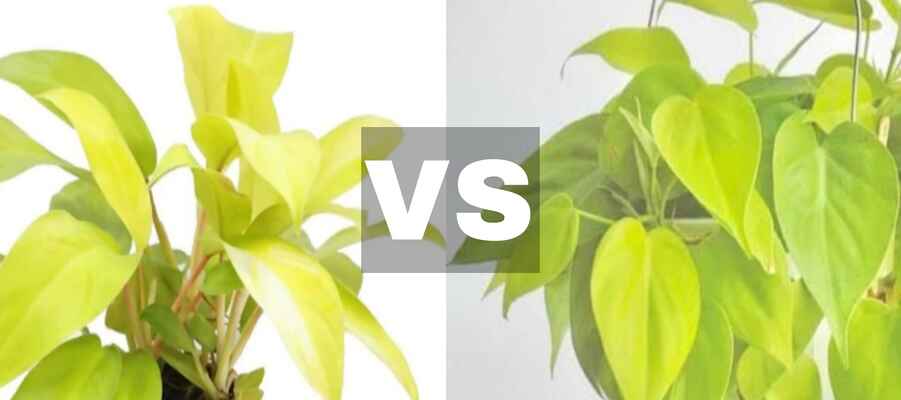The Philodendron Ceylon gold and lemon-lime Philodendron are quite similar to one another yet possess many contrasting characteristics. In this article, we will compare and contrast the Philodendron Ceylon gold vs lemon lime in the matter of their physical appearance, care requirements, ease of propagation, etc. For you understand the differences that set these remarkable species apart.
Philodendron Ceylon Gold
The Philodendron Ceylon gold is a climbing tropical shrub. Although these plants can also thrive in pots. It is a perennial species that also serves as an ornamental houseplant. It is commonly known as the Philodendron Golden Emerald or the Gold Satin.
Philodendron Lemon Lime
The Philodendron lemon lime is a beautiful houseplant that makes sure to bring a pop of color to any space by having striking foliage ranging from bright yellow to chartreuse. The lemon-lime Philodendrons can do well in various light conditions, however, these species prefer to grow under bright and indirect sunlight.
Philodendron Ceylon Gold Vs Lemon Lime
The Philodendron Ceylon gold and the Philodendron lemon-lime are equally popular and desired by a lot of plant enthusiasts. Both of them have their own set of benefits and drawbacks, making it quite challenging for people to choose one. Let us take a look at their contrasting features to get to know more about them.
Leaves
Both of these varieties of Philodendron can be easily characterized by their leaves. The leaves of the former plant are golden in color. Whereas, the latter species possess green leaves that are patterned with yellow streaks. Both plants have unique and gorgeous leaves that are sure to add a touch of elegance to any room.
Water Requirements
Both of these varieties thrive well in moist soil. However, the Philodendron Ceylon gold is able to tolerate drought conditions better than the lemon-lime Philodendron. However, it is recommended to water these plants once every 7 days or as required to avoid dehydration.
Temperature Requirements
The Philodendron Ceylon gold prefers to grow in temperatures ranging between 55° F (13° C) to 80° F (27°C). Whereas, the lemon-lime Philodendron requires the temperature to be 60° C to 75° F to flourish.
Rate of Growth
Both of these species can be differentiated on the basis of their growth rate. The Philodendron Ceylon gold is able to reach up to 20 feet long and grows at a moderate pace. Whereas, the Philodendron lemon lime grows quite fast and reaches up to 12 inches per month.
Growth Pattern
Another major difference between Philodendron Ceylon gold and lemon-lime lies in their pattern of growth. The Philodendron Ceylon gold is an evergreen vine that prefers to climb on trees as well as other supporting structures.
While, on the contrary, the lemon-lime Philodendron does not t climb on trees or supporting structures, rather it is a shrubby plant that you can prune to any desired shape.
Which Is Better: Philodendron Ceylon Gold Vs Lemon Lime
The Philodendron Ceylon gold is known due to its potential to improve the overall quality of air near its surroundings, whereas, the lemon-lime Philodendron is popular for its ability to remove toxins from the air.
Both of these species contribute to reducing the levels of stress and therefore create a calm and stress-free environment that gives a warm, welcoming vibe.
If you are looking for a beautiful perennial species having the ability to tolerate cold environments and are easier to look after, then no doubt the Philodendron Ceylon gold will be the right fit for your collection.
However, if you need a plant that grows at a fast rate and is easy to propagate and tolerant towards various light conditions, then the Philodendron lemon-lime will be the perfect choice for you.
Final Thoughts
Both of these varieties of Philodendron are beautiful and unique in their own manner. Having more plants indoors can have a very healthy and positive effect on your mental health and some plants are able to reduce stress from their environment.
Besides, the Philodendron Ceylon gold and the lemon-lime are extremely eye-catching ornamental houseplants that make perfect additions to any home or office. Whichever species you choose, I assure you that you will not regret your decision.

